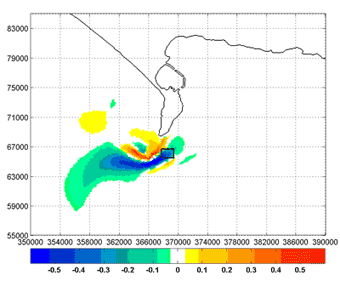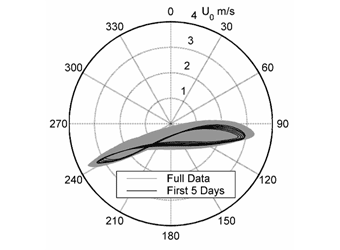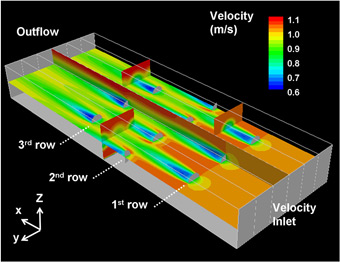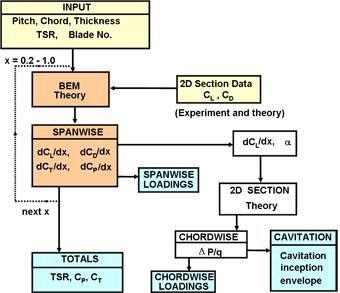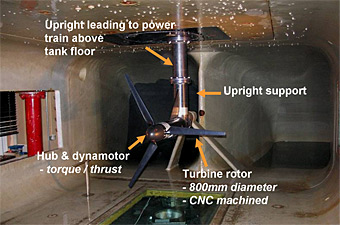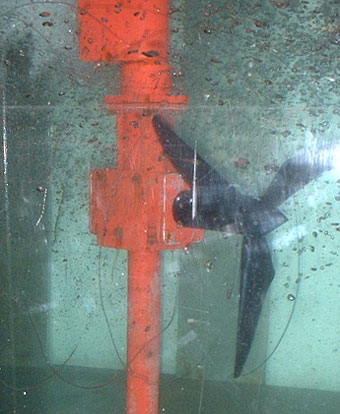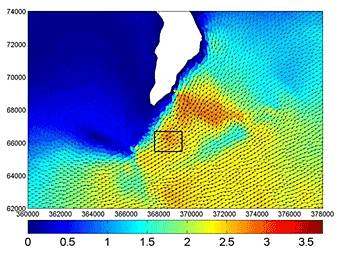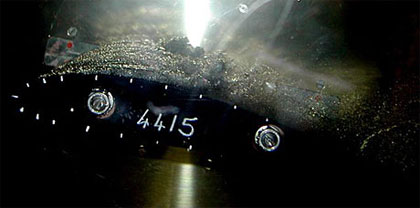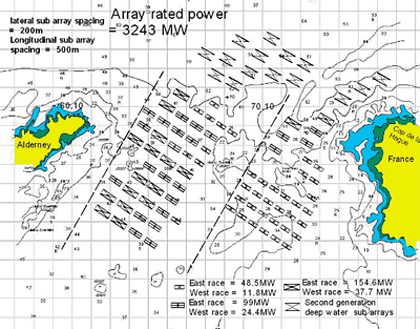Little is known about the possible effects that a large number of tidal turbines would have on the local tidal regime. Having some idea is important, not only for the purpose of predicting power output (it could be reduced due to reduced flow speeds), but also for environmental impact assessment. Field data on these effects […]
Tidal Energy
For example tidal data, simulation results around Portland Bill have been used, this site has a significant swing from the 180º flow reversal, allowing comparisons between fixed orientation and yawing devices. The variation of depth-averaged speed over 28 days from the simulation is shown in the first figure. The T_TIDE package for MATLAB was used […]
Initial simulations of arrays of tidal turbines have been performed using FLUENT a computational fluid dynamics (CFD) package. The use of CFD allows analysis of several possible farm simulations with different boundary conditions. Details of these initial simulations have been published in: Batten W.M.J. and Bahaj A.S. (2006) CFD simulation of a small farm of horizontal […]
SERG-Tidal is a tidal turbine prediction program developed at the University of Southampton is based on a blade element momentum (BEM) program for wind turbines initially developed in the late 1980’s at the university by Barnsley & Wellicome. The new code developed has major enhancements specifically established to deal with the operation in water and […]
As a continuation of the first set of tests to provide further detailed design information and validation date for numerical models a new experimental test rig was developed. This test rig has been designed, built and successfully used to measure power and thrust on model tidal turbines under various configurations and flow conditions. The setup […]
A scale model a horizontal axis marine current turbine was tested at the circulating water channel facility at QinetiQ in Hampshire. The model was scaled such that the ratios of the rotor diameter/water depth and the blade tip speed/inflow speed were equal to that of a full scale device. The three bladed rotor depicted was […]
Portland Bill on the South coast of the UK (view in maps.live.com) is a promising site for tidal stream energy, with high tidal stream velocities of up to seven knots (3.6 m/s) around the headland. Although the area with high tidal streams is smaller than other proposed sites in Scotland or the Channel Islands, the […]
Section performance data, which also include cavitation characteristics, are required for the detailed design of the turbine blades. It is found that suitable published data, with cavitation characteristics, are very limited and that there is a need to establish a better understanding of the cavitation performance of 2-D sections suitable for marine turbines. It is […]
The Race of Alderney lies between the channel island of Alderney and Cap de la Hague on the West coast of France. It is a large site and has the possibility of feeding electricity into the channel Island of French mainland grids. The Race is approximately 4 miles wide and there are large areas with […]
